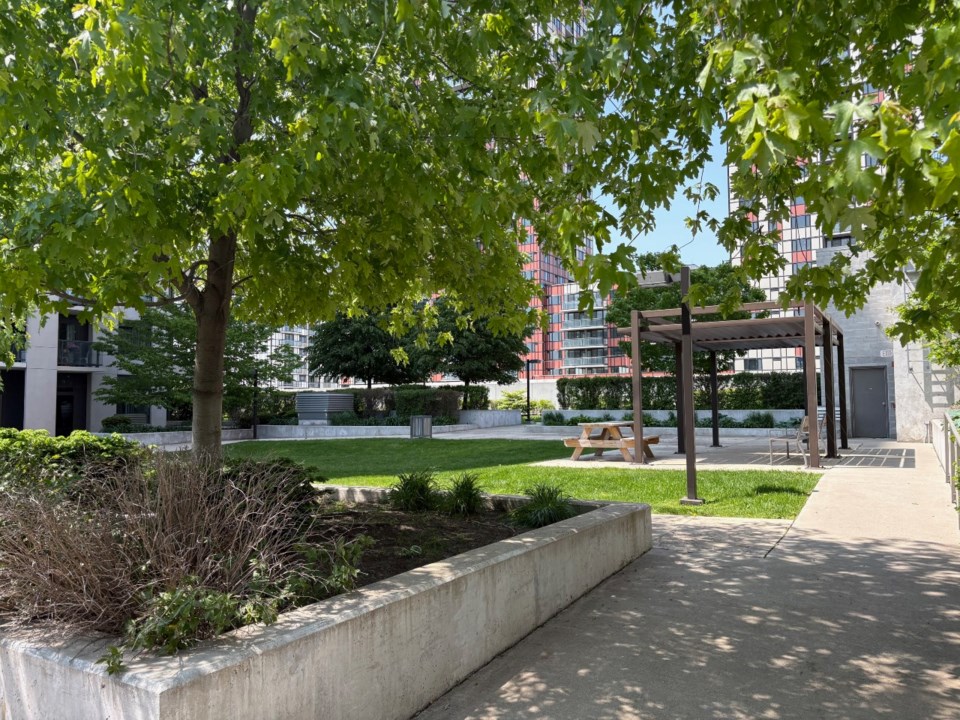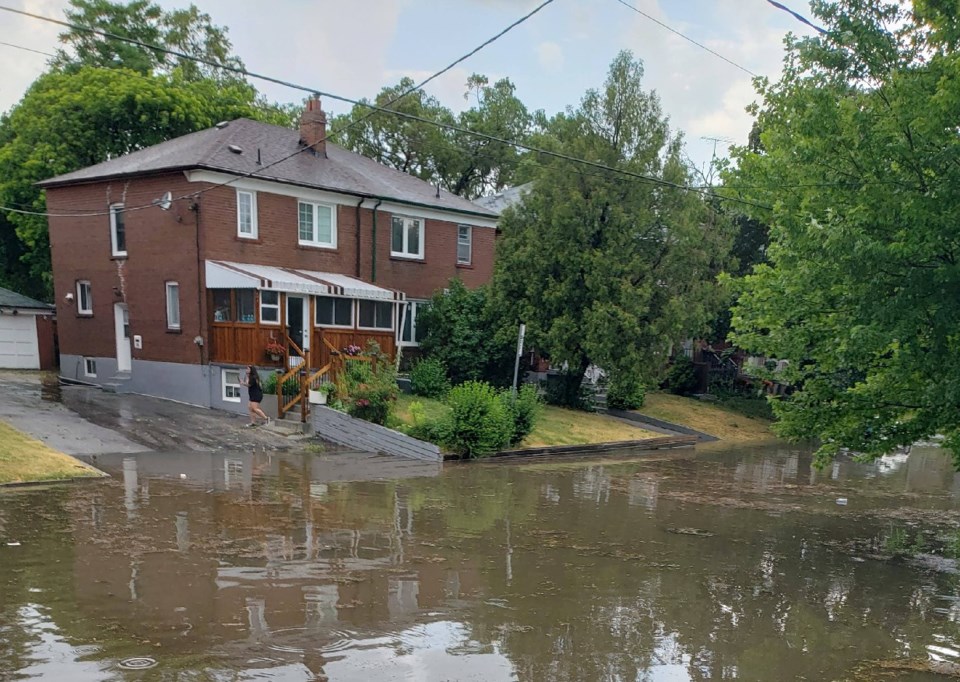Viewed from street-level, concrete covers much of the downtown core, but looking down from the CN tower, Toronto’s cityscape looks a little more natural, with hundreds of green roofs dotting the skyline.
When heavy rains hit the city, these roofs help prevent floods by absorbing rainwater that would otherwise be destined for Toronto’s aging sewers, which are prone to overflowing.
But environmental advocates say new legislation from Premier Doug Ford’s Progressive Conservative government will make it far less likely that future buildings are constructed with green roofs and other flood-proofing infrastructure.
The Ford government says Bill 17 will help developers pick up the pace of construction during a period of “economic uncertainty” that includes a residential building slump tied to high interest rates and low condo sales.
Among other things, Bill 17 — which has been time allocated by the government and could pass third reading by Monday evening — proposes to strip municipalities' ability to require developers to adhere to local planning rules beyond what’s demanded in Ontario’s Building Code.
“This will help standardize construction requirements and provide consistency, setting the same set of rules for everyone in Ontario, leading to faster approvals and reduced costs,” said Alexandra Sanita, a spokesperson for Municipal Affairs and Housing Minister Rob Flack.
But Bryan Purcell, vice-president of policy with The Atmospheric Fund, said the bill may slow construction down — at least temporarily — while effectively killing rules that have made Toronto’s infrastructure more flood-resilient at a time of worsening climate change.
“[This] could set back green building standards in Toronto by 15 years,” said Purcell.
The Toronto Green Standard
In 2006, the city created the Toronto Green Standard, a set of sustainable design rules, now at risk by the new legislation, that ushered in a wave of environmentally friendly design for private and city-owned developments.
While voluntary at first, the standards became mandatory in 2010 and more ambitious in subsequent years.
Under the latest rules, residential buildings above four storeys must provide parking spaces for bicycles, waste collection for organics and recycling, and meet certain standards for carbon emissions.
The green standard also requires developers to implement measures to reduce the amount of water running off their buildings into sewers. Together with the city’s Green Roof Bylaw, the rules have helped spur the creation of more than 600 green roofs citywide.
Sarah Buchanan, campaigns director with the Toronto Environmental Alliance, said green roofs help absorb water, preventing sewer backups and basement flooding.
Buchanan said green roofs also help cool buildings, reducing energy consumption, while providing a nice amenity for residents.
But while green roofs are now the “norm” for Toronto’s new large residential construction, Bill 17 may make them “exotic,” said Purcell.
The policy expert said the legislation “deeply undercuts” the green standard and may also make the Green Roof Bylaw more difficult for the city to uphold.
If developers are not forced to implement green roofs, they likely won’t, because the infrastructure is more expensive, Purcell said.

2024 summer flood damage cost well over $1 billion
Anabela Bonada, managing director of climate science at the Intact Centre on Climate Adaptation, said eliminating green building standards would be bad news for city residents’ and the municipal budget.
Last July, Toronto was deluged with rain, leading to widespread flooding and several billion dollars in damage — only about $1 billion of which was insured.
As climate change advances, Bonada said such freak flood events are expected to increase in number, making water-absorbing infrastructure all the more important.
“We have a housing crisis, I absolutely understand that,” she said.
“[But] if we build in a way that the homes are not resilient to flooding, then its going to be costlier both for the homeowner … and for our communities.”

Flood talk is ‘fearmongering’: development lobbyist
But Richard Lyall, president of RESCON, an industry association for residential builders, said concern about Bill 17 contributing to worsening floods is nothing more than “fearmongering.”
Though several studies have demonstrated that green roofs help reduce the potential for flooding, Lyall said they don’t typically work well and absorb only a modest amount of water.
“The plants die,” he said. “A green roof is not going to soak up torrential downpours and flooding.”
Lyall, whose organization filed a legal challenge against the Toronto Green Standard late last year, said Bill 17 is urgent legislation needed to speed up development and tackle Ontario’s housing crisis.
He said builders are forced to waste time tailoring their housing applications to various municipalities’ rules and that the proposed bill would simplify things greatly.
While he said flood risk is a concern, he said Toronto must invest in updating and expanding the volume of water its sewer system is capable of handling.
Concern Bill 17 will ‘backfire’
Buchanan, from the environmental alliance, maintained that green roofs and other flood-resilient building infrastructure make smart environmental and economic sense.
Building bigger sewer pipes is far more expensive than adding greater depth to the soil on apartment lawns or installing a green roof, she said.
Purcell added that he fears Bill 17 could actually slow down development because it will force cities and developers to take time to understand the new rules.
He said some developers may also choose to pause projects temporarily while they figure out whether the new law would allow them to build taller or in other ways that are more financially advantageous.
“These changes could backfire and actually have the opposite of the intended effect,” he said of the Ford government’s desire for speedy construction.
Purcell said an open letter his organization drafted in opposition to the province overriding local green building standards has received over 750 signatures as of Monday, including from over 100 companies and organizations.
A spokesperson for the City of Toronto said staff are “continuing to evaluate the proposed changes” resulting from Bill 17.
The spokesperson said municipal staff have been asked to prepare a report on the potential impact, which will be presented to the city’s executive committee on June 17.




